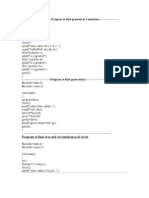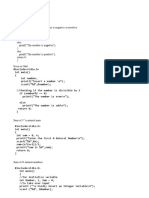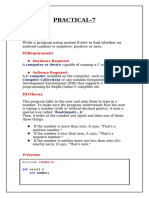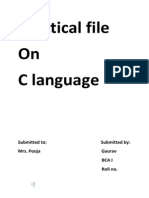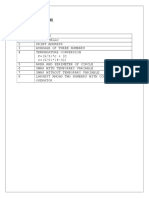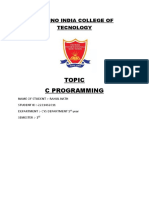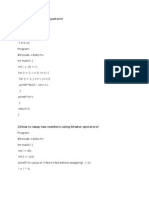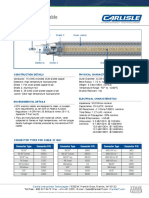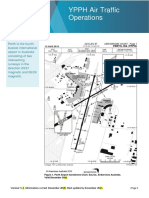0% found this document useful (0 votes)
22 views46 pagesC Lab Programs2025
The document provides a series of C programming exercises including algorithms and flowcharts for tasks such as calculating the sum and average of three numbers, finding the largest of three numbers, summing individual digits of a positive integer, generating Fibonacci sequences, identifying prime numbers, and checking for Armstrong and perfect numbers. Each exercise includes a detailed algorithm, flowchart, and sample C code. The document serves as a comprehensive guide for learning basic programming concepts in C.
Uploaded by
Krish KrishnaCopyright
© © All Rights Reserved
We take content rights seriously. If you suspect this is your content, claim it here.
Available Formats
Download as DOCX, PDF, TXT or read online on Scribd
0% found this document useful (0 votes)
22 views46 pagesC Lab Programs2025
The document provides a series of C programming exercises including algorithms and flowcharts for tasks such as calculating the sum and average of three numbers, finding the largest of three numbers, summing individual digits of a positive integer, generating Fibonacci sequences, identifying prime numbers, and checking for Armstrong and perfect numbers. Each exercise includes a detailed algorithm, flowchart, and sample C code. The document serves as a comprehensive guide for learning basic programming concepts in C.
Uploaded by
Krish KrishnaCopyright
© © All Rights Reserved
We take content rights seriously. If you suspect this is your content, claim it here.
Available Formats
Download as DOCX, PDF, TXT or read online on Scribd
/ 46







